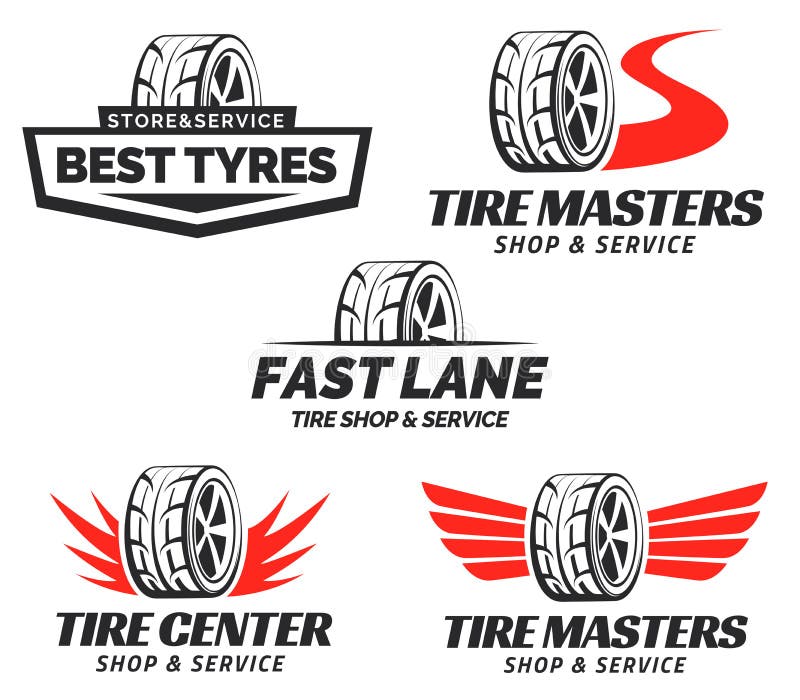The Scientific Research Behind Tire Fixing and Safety
When it comes to the complex world of tire upkeep and safety, there exists a world of scientific research that typically stays undetected by the average chauffeur - tire tracks morris il. The materials that compose a tire, the influence of tire stress on general safety and security, the ramifications of tread wear, the complex characteristics of tire traction, and the often-overlooked relevance of correct wheel positioning all play essential functions in ensuring a lorry operates securely and efficiently. As we browse via the complexities of tire repair and security, it ends up being noticeable that a much deeper understanding of these scientific concepts is not only advantageous but essential for each driver when traveling
Tire Make-up and Functionality
What products make up the structure of tires, and exactly how do these parts contribute to their capability on the road? Steel cables are included to enhance the tire's strength and assist it preserve its shape under various roadway problems.
The rubber substances use grasp and traction, enabling the tire to adhere to the road surface area and give stability during velocity, braking, and cornering. Generally, the careful selection and mix of these materials ensure that tires can carry out successfully and securely on different road surface areas and problems.
Impact of Tire Stress on Security
On the various other hand, overinflated tires have less contact with the roadway surface, reducing traction and causing unequal wear on the tire treads. Appropriately filled with air tires likewise play a critical duty in gas performance, as underinflated tires can increase moving resistance, leading to lowered gas mileage. Regularly checking and maintaining the correct tire stress not just makes sure safety and security however likewise extends the life expectancy of the tires, conserving on substitute expenses in the long run.
Tread Use and Its Ramifications
Appropriate monitoring of tire tread wear is essential for making sure optimum performance and safety on the roadway. As tires wear down, the deepness of the walk diminishes, minimizing the tire's ability to keep grip, specifically in damp or slippery conditions. The step pattern and depth play an essential role in directing water away from the tire to stop hydroplaning and maintaining grasp when driving surface area.
Irregular wear may suggest concerns with tire inflation, positioning, or suspension elements. Wear signs are constructed into the tire tread and end up being noticeable when the walk deepness gets to a specific reduced factor, indicating the requirement for instant substitute.

Recognizing Tire Grip Characteristics
Checking tire step wear not just ensures ideal performance and safety but also straight impacts the traction dynamics of the tires on various roadway surfaces. Tire traction is a critical facet of automobile handling and safety, as it establishes the grasp in between the tires and the road. Grip characteristics vary depending upon roadway problems such as completely dry sidewalk, damp roads, click this snow, or ice.

Understanding tire traction characteristics is important for motorists to adapt their driving actions according to the roadway conditions. discount tires morris il. Routinely examining tire step deepness and condition can dramatically boost traction efficiency, original site ensuring much safer driving experiences throughout different surface areas
Importance of Proper Wheel Alignment
Making certain correct wheel alignment plays an essential role in optimizing vehicle performance and expanding tire durability. Correct wheel alignment entails adjusting the angles of the wheels to maker specs, making certain that they are perpendicular to the ground and alongside each various other. When positioning is off, it can result in unequal tire wear, reduced fuel effectiveness, and endangered handling.
Among the essential benefits of keeping appropriate wheel placement is boosted handling and security. Misaligned wheels can cause the vehicle to pull to one side, affecting steering control and total driving experience. Furthermore, proper placement advertises even tire wear, stopping premature tire replacement and reducing upkeep expenses in the lengthy run.

Final Thought
To conclude, the science behind tire fixing and security is vital for maintaining lorry efficiency and guaranteeing chauffeur safety. By recognizing tire make-up, stress, tread wear, grip dynamics, and wheel placement, drivers can avoid accidents and extend the life-span of their tires. Appropriate maintenance and routine examinations are vital for optimal tire performance and overall lorry safety and security. By following these standards, drivers can drive with confidence knowing that their tires remain in good problem.
The materials that make up a tire, the effect of Visit Your URL tire pressure on general safety and security, the effects of step wear, the elaborate dynamics of tire traction, and the often-overlooked relevance of proper wheel alignment all play important functions in ensuring an automobile runs securely and successfully. On the various other hand, overinflated tires have much less contact with the roadway surface, lowering grip and causing irregular wear on the tire footsteps. Routinely examining and maintaining the proper tire stress not just ensures safety yet additionally expands the life expectancy of the tires, saving on replacement costs in the lengthy run.
Keeping track of tire walk wear not only guarantees optimal efficiency and safety but likewise directly impacts the traction dynamics of the tires on different road surfaces. Tire grip is a vital element of vehicle handling and safety, as it identifies the grasp in between the tires and the road.